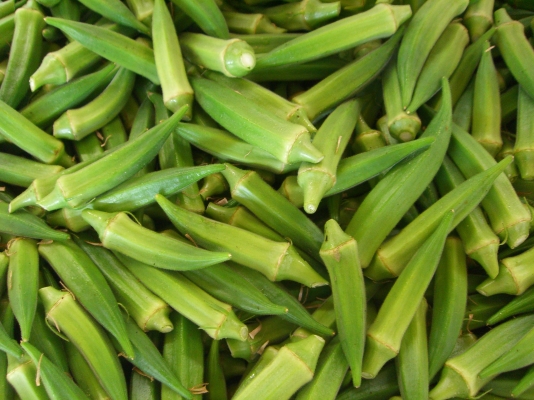Pusa Sawani: It is developed by IARI, New Delhi. The variety is suitable for cultivation in summer and rainy season. It is ready to harvest within 50 days. Fruits are dark green and 10-12cm long at time of harvesting. It is susceptible to yellow vein mosaic virus. Gives average yield of 40-56quintal/acre.
Harbhajan: The variety is suitable for summer and rainy season. It has early maturing fruit which is deep green in color and is soft. The variety is resistant to yellow mosaic virus. It gives an average yield of 36-40quintal/acre.
P-8: New variety, medium height plant variety (53-71cm long) and 12-15cm long fruit, approximately 10 fruits per plant, resistant to yellow mosaic virus. It gives an average yield of 42quintal/acre.
Other state varieties:
Pusa Mahakali: Developed by IARI, New Delhi. Its fruits are of light green color.
Parbhani Kranti: Released by MKV, Parbhani. Fruits are medium long and tender with good keeping quality. It is tolerant to Yellow Vein Mosaic Virus. Gives average yield of 35-45quintal/acre.
Arka Anamika: Developed by IIHR, Banglore. It is resistant to yellow mosaic virus. It gives average yield of 80quintal/acre.
Arka Abhay: Released by IIHR, Banglore. Fruit is resistant to Yellow Mosaic Virus.
Pusa A 4: Resistant to yellow mosaic virus and aphid. Ready to harvest in 45 days. Gives average yield of 56quintal/acre.
Perkins Long green: Suitable for growing in hilly areas.
Kashi Vibhuti: Gives first harvesting 38-40 days after sowing. Gives average yield of 68-72quintal/acre.
Aruna: Released by KAU. Variety having red color pods. It is resistant to Yellow vein Mosaic virus. Gives average yield of 64quintal/acre.
CO 1: High yielding variety released by TNAU. Variety having red color pods.











